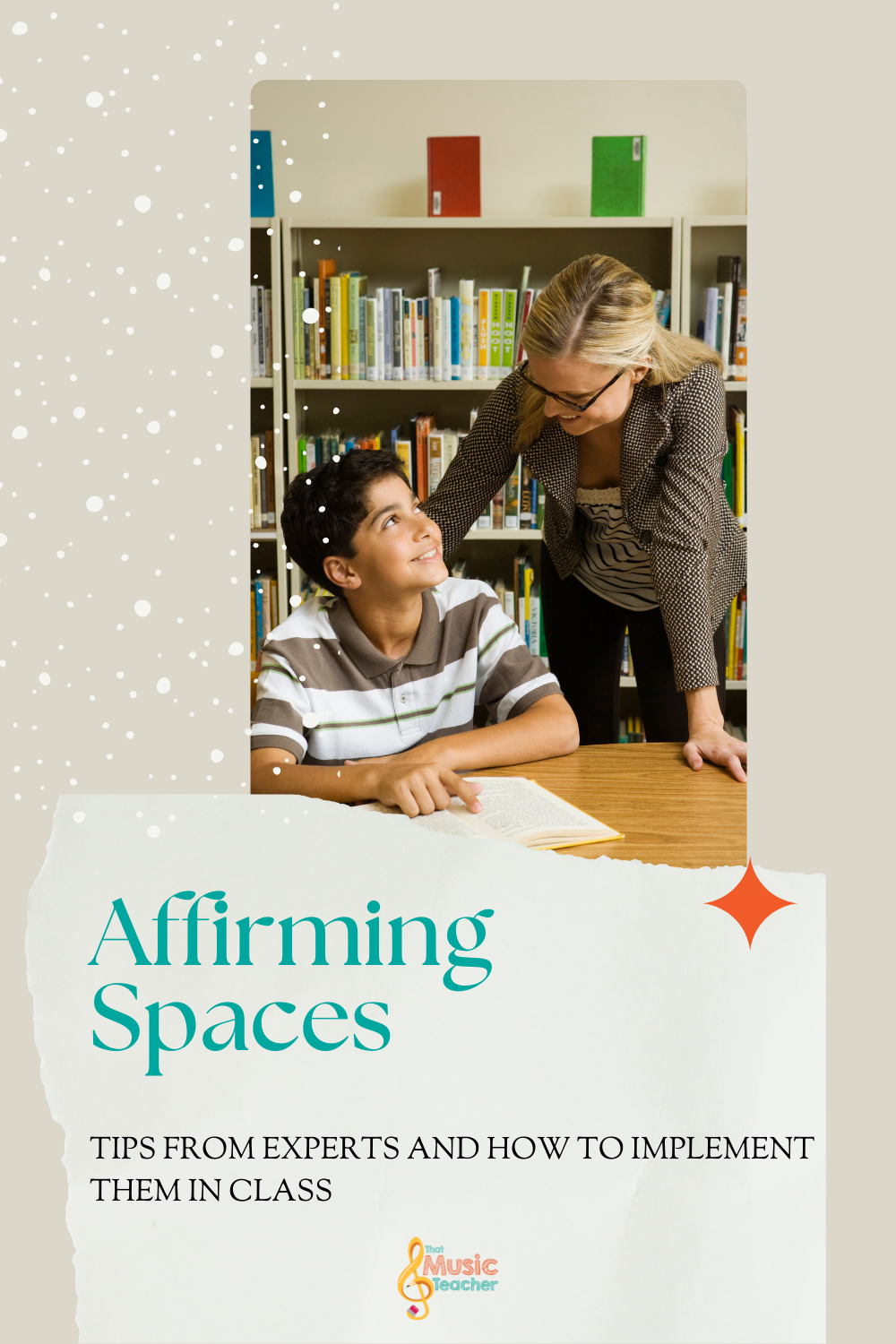
Affirming Spaces: Tips from Experts and How to Implement them in Class
Dec 07, 2021What are we doing to make our classrooms as safe a space as they possibly can be?
As teachers, we worry about our students fairly often. Not only do we worry about their grades or how they are understanding a concept, but we worry about them emotionally as well. I know many that worry about their lives outside of school. In reality, we should be focusing way more on our students’ lives inside of school, and how we can create spaces that affirm our students and make them feel loved and accepted. So, how do we go about doing this?
One of my good friends, Ash Bell, has been an excellent resource for me when beginning to create more affirming spaces in my classes. They have an Instagram, @therainbowtoolbox, and on this account Ash provides entertaining and informational posts and reels all about creating affirming spaces for LGBTQIA+ students. I am fortunate enough to have attended one of their training sessions as well to have hosted an Instagram live with them earlier this year all about creating affirming spaces in classrooms. I am going to detail in this blog some of the tips that Ash had given me to implement in my class, and how those tips have unfolded in my classroom so far this year. So, if you are ready to do more than hang an “All Are Welcome” sign in your classroom and think that is enough, continue reading on to see what more you can do!
Student Intake Forms are critical
I had not done student intake forms until this year, and I will never go back. Having a student-intake form has immensely helped me to be more sensitive and knowledgeable about my students. On my student intake form, I ask questions such as their name/nickname, their hobbies, and their favorite subject. However, I also ask more pertinent questions to my student’s identities and learning styles. Ash helped me with not only asking my student’s their pronouns on this form, but asking if I could use them out loud in class. This is important, because some students who are using pronouns they may have never used before may not be comfortable with other peers knowing about these pronouns, but still want YOU to know about them. You may be reading this and thinking that you are nervous about putting a question about pronouns on your intake form for fears of backlash or not feeling comfortable enough to explain this concept to students.
If this is you, I would like you to do three things:
1. Really ask yourself, how could you get backlash for this? You are trying to be as understanding, conscientious, and respectful to ALL of your students as possible. Before sending this form to my students, I like to explain to them that, even though they may have never thought of their own pronouns before, there are other students in class who have and it is important that we are all respected and spoken about the way we want to be. For me, this is all I have ever needed to say to explain my reasons for having this question in my form.
2. If you do not feel comfortable explaining what pronouns are to your students, I suggest that you 1) Learn more about why you feel this way, and challenge any biases or thoughts that may come up, and 2) Take trainings from LGBTQIA+ folx and professionals who can help you to understand and explain this better to students. Like I mentioned above--When talking about pronouns to my students, I always bring it back to respect. This may be something some students have never thought about- but that is NOT the case for every child. To make sure our classes are truly affirming for all students, it is imperative we ask these questions on our intake forms.
3. Also, ask yourself: Who am I benefiting from NOT asking this question. If it’s the parents, school board, principals--basically anyone other than the students, then you are not focusing on making your classroom affirming for your students.
Create Student-Teacher Contracts
This is another activity that I suggest you begin facilitating and then turn over to students. Once you cover ground rules of creating expectations together, this really helps to give students a voice in how they would like to be treated within the classroom. When I create student-teacher contracts at the beginning of a marking period with a class, most students cannot even tell me what the words “respect,” mean, and yet they are told every day to “respect your teachers” and “respect your peers.” We break down this concept, along with other concepts, surrounding respect, compassion, and understanding, and what we want that to look like in our classroom. We go over concrete examples, too, so that students can actually see real life examples of how respect might look in the classroom. You may have to jump in and help with generating ideas or fine-tuning expectations, but students really love this activity when they can do it themselves and definitely take much more ownership in the class community when they develop their classroom expectations together.
Keep in mind, students often are looking for teachers to show them respect, too. Respect is a two-way street. We need to understand that students are young people still figuring the world out, so they may not be respectful 100% of the time. It is easy to be offended and snap, but the next time this happens, I want you to ask yourself, “Is their behavior really about me? Or is it about something else?” Typically, once you sit and think about this question, you can figure out what the true cause of the student behavior is and offer support to help.
Create goals and deadlines.
During one of Ash’s workshops, they suggested that every teacher think of one area that they are lacking representation in and create a goal around that. For instance, if you notice that your classroom library is severely lacking LGBTQIA+ representation, how can you create a goal to increase that representation? Likewise, if you notice that your “Composers” unit is compromised of lessons all about a bunch of dead, old, caucasian males, you may want to set a goal for yourself to include composers of different backgrounds, genders, sexual orientations and disabled composers as well. Once you find where you want to focus on, you can make your goal for yourself to do “X” in “X” amount of time. For instance, I noticed that I did not have many lessons that focused on LGBTQIA+ performers. Therefore, I created a goal to incorporate 3 LGBTQIA+ artists into my lesson plans over the next marking period.
Listen, you do not need to recreate and fix everything all at once. That is a recipe for burnout and you will most likely not take the time and consideration to truly make meaningful change. Choose an area, create a goal, write it down, and monitor that goal over the course of a marking period. Not only will this help you to keep yourself accountable, but it will give you a realistic timeframe to complete this change as well.
We Can All Do More
When it comes to creating affirming spaces, there is always more we can do and add. And this concept scares a lot of educators away from even trying in the first place. However, for me, this is exhilarating. What excites me about this is and what this actually means is that we are always looking for ways to make all of our students feel safe and supported in schools. Safety and support are the foundation that our students need to feel ready to learn. We need this before we can expect anything else out of our students. I am happy and invigorated when I think about how creating more affirming spaces will help all of my students to thrive in my classroom.
Check out our Disabilities in the Music Classroom freebie for more help in taking those first steps towards better serving the students with disabilities in your classroom.
If you want to read more about Ash and their work, please visit their website, therainbowtoolbox.com. Ash also does inservices for school districts and hosts teacher professional developments (which I highly recommend!) You will not regret it if you choose to go to one of their seminars or professional development workshops.
This article was submitted by Lauren Marcinkowski contributing author for ThatMusicTeacher.com. Interested in becoming a contributing author? Email resume and writing sample to [email protected]

Don't miss a beat!
New moves, motivation, and classes delivered to your inbox.
We hate SPAM. We will never sell your information, for any reason.

